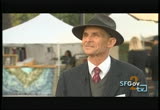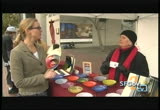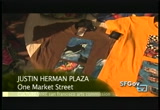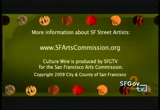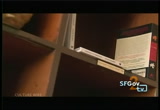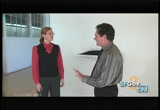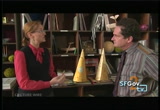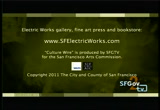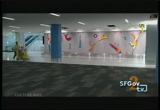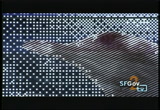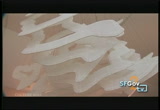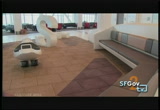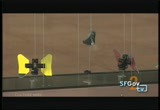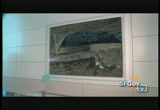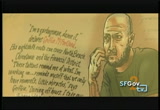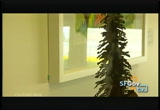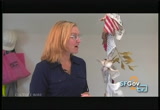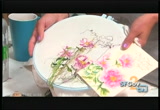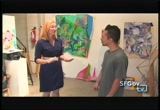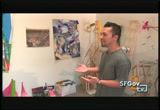tv [untitled] December 17, 2012 11:30am-12:00pm PST
11:30 am
how much has it changed? >> i have been with the program since it began 37 and a half years ago but i have seen changes in the trend. fashion comes and goes. >> i think that you can still find plenty of titis perhaps. >> this is because the 60's is retro for a lot of people. i have seen that come back, yes. >> people still think of this city as the birth of that movement. great, thank you for talking about the background of the program. i'm excited to go shopping. >> i would like you to meet two street artists. this is linda and jeremy. >> night said to me to print them -- nice to meet you.
11:31 am
>> can you talk to me about a variety of products that use cell? >> we have these lovely constructed platters. we make these wonderful powder bowls. they can have a lot of color. >> york also using your license. -- you are also using your license. >> this means that i can register with the city. this makes sure that our family participated in making all of these. >> this comes by licensed artists. the person selling it is the person that made it. there is nothing better than the
11:32 am
people that made it. >> i would like you to meet michael johnson. he has been in the program for over 8 years. >> nice to me you. what inspired your photography? >> i am inspired everything that i see. the greatest thing about being a photographer is being able to show other people what i see. i have mostly worked in cuba and work that i shot here in san francisco. >> what is it about being a street artist that you particularly like? >> i liked it to the first day that i did it. i like talking to mentum people. talking about art or anything that comes to our minds. there is more visibility than i
11:33 am
would see in any store front. this would cost us relatively very little. >> i am so happy to meet you. i wish you all of the best. >> you are the wonderful artist that makes these color coding. >> nice to me to. >> i have been a street artist since 1976. >> how did you decide to be a street artist? >> i was working on union square. on lunch hours, i would be there visiting the artist. it was interesting, exciting, and i have a creative streak in me. it ranges from t-shirts, jackets, hats. what is the day of the life of a street artist? >> they have their 2536 in the
11:34 am
morning. by the end of the day, the last people to pack the vehicle probably get on their own at 7:30 at night. >> nice to me to condemn the -- nice to meet you. >> it was a pleasure to share this with you. i hope that the bay area will descend upon the plaza and go through these arts and crafts and by some holiday gifts. >> that would be amazing. thank you so much for the hard work that you do.
11:35 am
>> i'm your host of "culturewire," and today, here at electric works in san francisco. nice to see you today. thanks for inviting us in and showing us your amazing facility today. >> my pleasure. >> how long has electric works been around? >> electric works has been in san francisco since the beginning of 2007. we moved here from brisbane from our old innovation. we do printmaking, gallery shows, and we have a fabulous retail store where there are lots of fun things to find. >> we will look at all of that as we walk around. it is incredible to me how many different things you do. how is it you identify that san francisco was in need of all
11:36 am
these different services? >> it came from stepping out of graduate school in 1972. i wrote a little thing about how this is an idea, how our world should work. it should have printmaking, archiving, a gallery. it should have a retail store. in 1972, i wanted to have art sales, point-of-sale at the grocery store. >> so you go through the manifesto. with the bay area should have. you are making art incredibly accessible in so many different ways, so that is a good segue. let's take a walk around the facilities. here we are in your gallery space. can you tell me about the current show? >> the current show is jeff chadsey. he is working on mylar velum, a smooth, beautiful drawing
11:37 am
surface. i do not know anyone that draws as well as he does. it is perfect, following the contours and making the shape of the body. >> your gallery represents artists from all over, not just the bay area, an artist that work in a lot of different media. how to use some of what you look for in artists you represent? >> it is dependent on people are confident with their materials. that is a really important thing. there is enough stuff in the world already. >> you also have in his current show an artist who makes sculpture out of some really interesting types of materials. let's go over and take a look at that. here we are in a smaller space. project gallery. >> artists used the parameters of this space to find relationships between the work that is not out in the big gallery.
11:38 am
>> i noticed a lot of artists doing really site-specific work. >> this is a pile of balloons, something that is so familiar, like a child's balloon. in this proportion, suddenly, it becomes something out of a dream. >> or a nightmare. >> may be a nightmare. >> this one over here is even harder to figure out what the initial material is. >> this is made out of puffy paint. often, kids use it to decorate their clothes. she has made all these lines of paint. >> for the pieces we are looking at, is there a core of foam or something in the middle of these pieces that she built on top of? >> i'm not telling. >> ah, a secret. >> this silver is aluminum foil, crumbled of aluminum foil. her aesthetic is very much that quiet, japanese spatial thing
11:39 am
that i really admire. their attention to the materiality of the things of the world. >> this is a nice juxtaposition you have going on right now. you have a more established artists alongside and emerging artists. is that something important to you as well? >> very important in this space, to have artists who really have not shown much. now let's look at other aspects of electric works operation. let's go to the bookstore. >> ok. >> in all seriousness, here we are in your store. this is the first space you encounter when you come in off the street. it has evolved since you open here into the most amazingly curious selection of things. >> this was the project for the berkeley art museum. it was -- this is from william
11:40 am
wiley's retrospective, when he got up onstage to sing a song, 270 people put on the cat. >> it is not just a bookstore. it is a store. can you talk us through some of your favorites? >> these are made in china, but they are made out of cattails. >> these pieces of here, you have a whale head and various animals and their health over there, and they are jewelry. >> we do fund raisers for nonprofits, so we are doing a project for the magic theater, so there are some pretty funny cartoons. they are probably not for prime time. >> you sort of have a kind of holistic relationship where you might do merchandise in the store that promotes their work and practice, and also, prince for them. maybe we should go back and look at the print operation now.
11:41 am
>> let's go. >> before we go into the print shop, i noticed some incredible items you have talked back here. what are we standing in front of? >> this is william wiley, only one earth. this is a print edition. there are only eight total, and what we wanted to do was expand the idea of printmaking. this is really an art object. there we go. >> besides the punball machine, what do you produce in limited edition? >> there is the slot machine. if you win the super jackpot, you have saved the world. >> what about work? >> the right design, it was three volumes with lithographs
11:42 am
in each volume. the cab of count dracula with 20 lithographs inside and lined with beaver fur. really special. >> let's move on to the print shop. >> ok. the core of what we do is making things. this is an example. this is a print project that will be a fund-raiser for the contemporary music players. we decided to put it in the portfolio so you could either frame at or have it on your bookshelf. >> so nonprofits can come to you, not just visual are nonprofits, but just nonprofits can come to you, and you will produce prints for them to sell, and the profits, they can keep. >> the return on investment is usually four times to 10 times the amount of investment. this is for the bio reserve in
11:43 am
mexico, and this is one of the artists we represent. >> you also make prints for the artists that you represent. over here are some large prints by a phenomenal artist. >> he writes these beautiful things. anyone who has told you paradise is a book of rules is -- has only appeared through the windows. this is from all over coffee. we are contract printers for all kinds of organizations all across the country. >> thank you very much for showing us around today. i really appreciate you taking the time to let me get better acquainted with the operation and also to share with our "culturewire" team. >> welcome to culture wire.
11:44 am
we will look at the latest and greatest public art project. recently, the airport unveiled the new state of the art terminal. let's take a look. the new terminal service and american airlines and virgin america was designed by a world- renowned architecture's firm. originally built in 1954, the building underwent massive renovation to become the first registered terminal and one of the must modern and sustainable terminals and the united states. the public art program continues its 30-year legacy of integrating art into the airport environment with the addition of
11:45 am
five new commissions that are as bold and dynamic as the new building. >> this project was completed in record time, and we were able to integrate the artist's early enough in the process that they could work with the architect said that the work that is completed is the work that really helps complement and instill the space as opposed to being tucked away in a corner. >> be experience begins with the glass facades that was designed with over 120 laminated glass panels. it captures the experience of being under or over clouds when flying in a plane. depending on the distance or point of view, it can appear clear for more abstract and atmospheric. the subtle colors change gradually depending on the light and the time of day.
11:46 am
>> i wanted to create an art work that looks over time as well as working on in the first glance. the first time you come here, you may not see a. but you may be able to see one side over the other. it features a couple of suspended sculptures. each was created out of a series of flat plains run parallel to each other and constructed of steel tubing. >> it is made up of these strata. as the light starts to shift, there is a real sense that there is a dynamism. >> it gives the illusion that this cultures might be fragments of a larger, mysterious mass. >> the environmental artwork
11:47 am
livens it with color, light, and the movement. three large woven soldiers are suspended. these are activated by custom air flow program. >> i channeled air flow into each of these forms that makes it move ever so slightly. and it is beating like a heart. if-0 when as of the forces of nature moving around us every second. >> shadow patterns reflect the shapes of the hanging sculptures. the new terminal also features a children's play areas. both of the market the exploratory n.y. --
11:48 am
exploratorium. the offer travelers of all ages a playful oasis. using high quality plywood, they created henches shaped like a bird wings that double as musical instruments. serving as a backdrop is a mural featuring images of local birds and san francisco's famous skyline. >> in the line between that is so natural, you can see birds and be in complete wilderness. i really like that about this. you could maybe get a little snapshot of what they are expecting. >> it is an interactive, keck sculpture that is interacted with by the visitor. >> they are a lot about and they
11:49 am
fall down the belt. it moves the belt up, and if you turn that faster, the butterflies fall in the move of words. >> the art reflect the commission's commitment to acquiring the best work from the bay area and beyond. in addition to the five new commissions, 20 artworks that were already in the airport collection were reinstalled. some of which were historically cited in the terminal. it includes major sculptures by the international artists. as a collection, these art works tell the story of the vibrant arts scene in the early 1960's through the mid-1980s's. the illustrate san francisco's cultural center and a place of innovation that is recognized and the love throughout the
11:50 am
world. one of the highlights is a series of three left tapestries. they are on view after being in storage for 20 years. these tapestries representing various gardens. from his years of living in san francisco. hydrangeas, chrysanthemums, and whilst dahlias in rich, deep shades as they make their way to the baggage area. they can access behind-the- scenes information and interviews with the artist through an audio to work. it features archival audio as well as interviews with living artists. he can be accessed on site by dialing the telephone numbers
11:51 am
located near the artwork or by visiting the commission's web site. the public art speaks volumes of san francisco as a world-class city with world-class art and culture. for more information, visit >> welcome to "culturewire." today we are at recology. they are celebrate 20 years of one of the most incredibly unique artist residency programs. we are here to learn more from one of the resident artists. welcome to the show, deborah. tell us how this program began 20 years ago.
11:52 am
>> the program began 20 years ago. our founder was an environmentalist and an activist and an artist in the 1970's. she started these street sweeping campaigns in the city. she started with kids. they had an exhibition at city hall. city officials heard about her efforts and they invited her to this facility. we thought it would coincide with our efforts to get folks to recycle, it is a great educational tool. since then, we have had 95 professional artists come through. >> how has the program changed over the years? how has the program -- what can the public has an artist engage with? >> for the most part, we worked with metal and wood, what you would expect from a program like ours. over the years, we tried to
11:53 am
include artists and all types of mediums. conceptual artists, at installation, photographers, videographers. >> that has really expanded the program out. it is becoming so dynamic right now with your vision of interesting artists in gauging here. why would an artist when to come here? >> mainly, access to the materials. we also give them a lot of support. when they start, it is an empty studio. they go out to the public area and -- we call it the big store. they go out shopping, take the materials that, and get to work. it is kind of like a reprieve, so they can really focus on their body of work. >> when you are talking about recology, do you have the only sculpture garden at the top? >> it is based on work that was
11:54 am
done many years ago in new york. it is the only kind of structured, artist program. weit is beautiful. a lot of the plants you see were pulled out of the garbage, and we use our compost to transplant them. the pathway is lined with rubble from the earthquake from the freeways we tour about 5000 people a year to our facility, adults and children. we talk about recycling and conservation. they can meet the artists. >> fantastic. let's go meet some of your current artists. here we are with lauren. can you tell us how long have been here so far and what you're working on? >> we started our residency on june 1, so we came into the studio then and spent most of the first couple weeks just digging around in the trash.
11:55 am
i am continuing my body of work, kind of making these hand- embroidered objects from our day-to-day life. >> can you describe some of the things you have been making here? this is amazing. >> i think i started a lot of my work about the qualities of light is in the weight. i have been thinking a lot about things floating through the air. it is also very windy down here. there is a piece of sheet music up there that i have embroidered third. there is a pamphlet about hearing dea -- nearing death. this is a dead rabbit. this is what i am working on now. this is a greeting card that i found, making it embroidered. it is for a very special friend. >> while we were looking at this, i glanced down and this is amazing, and it is on top of a
11:56 am
book, it is ridiculous and amazing. >> i am interested in the serendipity of these still life compositions. when he got to the garbage and to see the arrangement of objects that is completely spontaneous. it is probably one of the least thought of compositions. people are getting rid of this stuff. it holds no real value to them, because they're disposing of it. >> we're here in another recology studio with abel. what attracted you to apply for this special program? >> who would not want to come to the dump? but is the first question. for me, being in a situation that you're not comfortable in has always been the best. >> what materials were you immediately attracted to when you started and so what was available here? >> there are a lot of books. that is one of the thing that hits me the most. books are good for
11:57 am
understanding, language, and art in general. also being a graphic designer, going straight to the magazines and seeing all this printed material being discarded has also been part of my work. of course, always wood or any kind of plastic form or anything like that. >> job mr. some of the pieces you have made while you have been here. -- taught me through some of the pieces you have made while you have been here. >> the first thing that attracted me to this was the printed surface. it was actually a poster. it was a silk screen watercolor, about 8 feet long. in terms of the flatwork, i work with a lot of cloddish. so being able to cut into it come at into it, removed parts, it is part of the process of negotiating the final form. >> how do you jump from the two dimensional work that you create to the three-dimensional? maybe going back from the 3f to
11:58 am
2d. >> everything is in the process of becoming. things are never said or settled. the sculptures are being made while i am doing the collages, and vice versa. it becomes a part of something else. there's always this figuring out of where things belong or where they could parapets something else. at the end goal is to possibly see one of these collage plans be built out and create a structure that reflects back into the flat work. >> thank you so much for allowing "culturewire" to visit this amazing facility and to learn more about the artists in residence program. is there anything you like our viewers to know? >> we have art exhibitions every four months, and a win by the public to come out. everybody is welcome to come out. we have food. sometimes we have gains and
11:59 am
bands. it is great time. from june to september, we accept applications from bay area artists. we encouraged artists from all mediums to apply. we want as many artists from the bay area out here so they can have the same experience. >> how many artists to do your host here? >> 6 artist a year, and we receive about 108 applications. very competitive. >> but everyone should be encouraged to apply. thank you again for hosting us. >> thank you for including us in "culturewire." ♪ >> my name is peter stein. i'm a lifelong friend of milton marks and his family at least going back a generation and it's really my honor today on behalf of milton's family, friends and his wife abbey and is
73 Views
IN COLLECTIONS
SFGTV2: San Francisco Government Television Television Archive
Television Archive  Television Archive News Search Service
Television Archive News Search Service 
Uploaded by TV Archive on

 Live Music Archive
Live Music Archive Librivox Free Audio
Librivox Free Audio Metropolitan Museum
Metropolitan Museum Cleveland Museum of Art
Cleveland Museum of Art Internet Arcade
Internet Arcade Console Living Room
Console Living Room Books to Borrow
Books to Borrow Open Library
Open Library TV News
TV News Understanding 9/11
Understanding 9/11